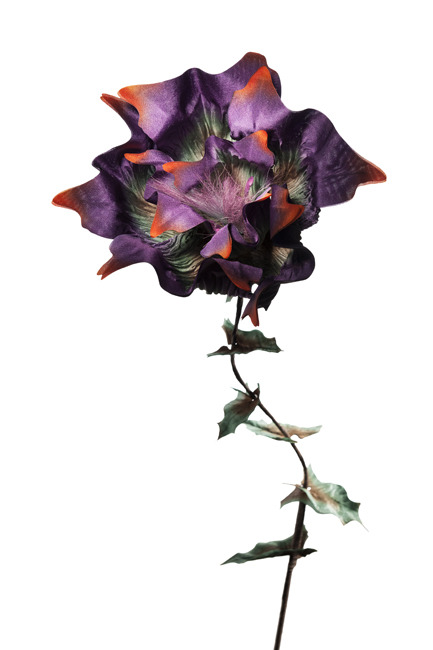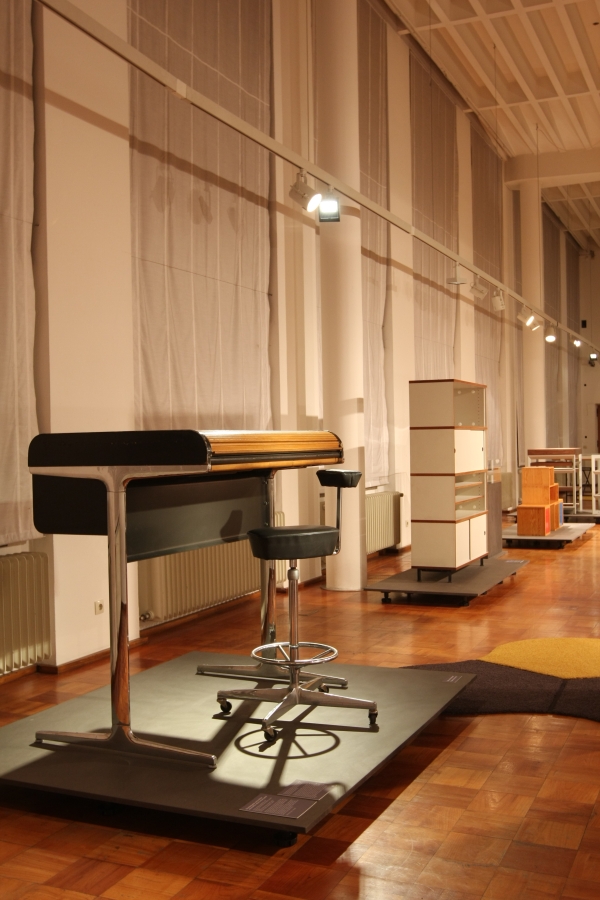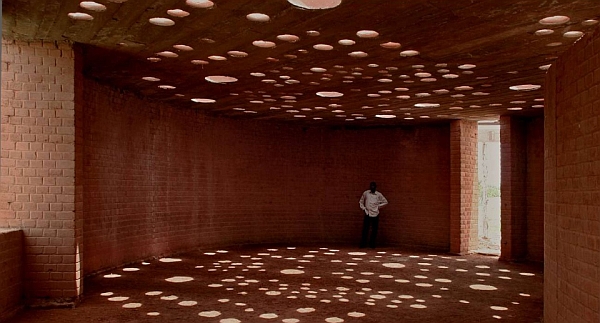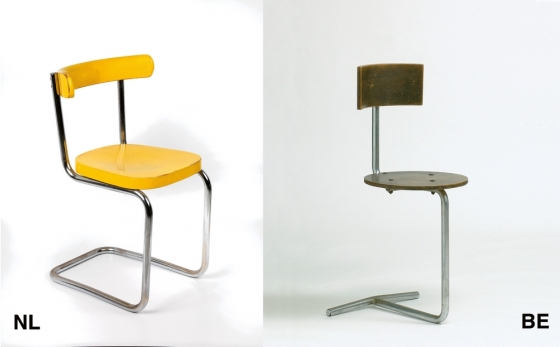5 New Design Exhibitions for June 2015
“The real jewel of my disease-ridden woodlot is the prothonotary warbler”, confided the American author, ecologist and conservationist Aldo Leopold in his 1949 book “A Sand County Almanac”, “The flash of his gold-and-blue plumage amid the dank decay of the June woods is in itself proof that dead trees are transmuted into living animals, and vice versa.”
The following five new design and architecture exhibitions are our prothonotary warblers: proving as they, hopefully, do that abstract ideas can be transmuted into viable, practical, sustainable, living projects for the benefit and amusement of all. If not vice versa. And hopefully not during a dank June, but a glorious, flaming, June.
“Where are the women in Danish design?” at Trapholt – Museum of Modern Art, Applied Art, Design and Architecture, Kolding, Denmark
As we’ve noted more than once the history of design is largely a his-story of design, being as it is essentially a professional gentlemen’s club. And where females are admitted it is invariably only as part of a male partnership: Charles and Ray Eames, Le Corbusier and Charlotte Perriand, Mies van der Rohe and Lily Reich, being among the more famous examples. To mark the centenary of Denmark giving women the vote the Trapholt museum is asking the very pertinent question “Where are the women in Danish design?”
Is Danish design really just Hans J. Wegner, Arne Jacobsen, Finn Juhl, Verner Panton, Børge Mogensen et al
Are talents such as Louise Campbell or Nanna Ditzel aberrations who history will forget?
And what remains of Poul Henningsen‘s campaigning to establish gender equality in Scandinavia? A crusade in which, amongst other efforts, he composed Denmark’s 1965 Eurovision Song Contest entry, the delightfully feminist For din skyld, and in 1967 penned the words “it will not be sufficient to grant women access to all trades on equal terms with men. The fight for equality must take place on all fronts and there is still far to go, even though we here in Scandinavia may be further ahead than other places.”1 The fact that the Trapholt museum feel obliged to pose the question they have would tend to imply the journey is far from over.
Where are the women in Danish design? opens at the Trapholt – Museum of Modern Art, Applied Art, Design and Architecture, Æblehaven 23, 6000 Kolding on Wednesday June 3rd and runs until Thursday December 31st
1. Ove Brusendorff and Poul Henningsen, A history of eroticism. Volume 6. In our time, Stuart, New York 1967

GJ Table by Grete Jalk from 1963, part of Where are the women in Danish design? at the Trapholt museum Kolding (“Gratuitously draped over design objects to provide marketing scintillation”, would appear to be the somewhat obvious answer)
“Africa. Architecture, Culture, and Identity” at Louisiana Museum of Modern Art, Humlebæk, Denmark
Following on from their explorations of contemporary architecture, culture and identity in Scandinavia and “Arabia” the Louisiana Museum of Modern Art turn their attention, as are so many institutions during 2015, to Africa.
Focussing on seven central themes – Belonging, Co-Existence, Expanding Cities, Making Space, Rebuilding, New Communities and Building Futures – Africa. Architecture, Culture, and Identity promises to present examples of contemporary African architecture, and what the museum refer to as “living traditions”, which serve as the basis for discussion on how architecture enhances, enables and supports contemporary African society. Or put another way, how architecture seeks to assist modern Africa move towards a new sense of self.
Africa. Architecture, Culture, and Identity opens at the Louisiana Museum of Modern Art, Gl. Strandvej 13, 3050 Humlebæk on Thursday June 25th and runs until Sunday October 25th
“The False Flower. A Design Fairy Tale by Hermann August Weizenegger” at the Kunstgewerbemuseum Dresden, Germany
The Berlin designer Hermann August Weizenegger is amongst the more mercurial figures in contemporary German design. Yes mercurial as in, effervescent, resilient and spirited, but for all mercurial as in unpredictable; moving as he does effortlessly between product design, fashion design, installation and downright audacity. In conjunction with the Kunstgewerbemuseum Dresden Hermann August Weizenegger cooperated with the Deutsche Kunstblume Sebnitz – a traditional maker of silk flowers in the German state of Saxony – to create two new, contemporary, artificial flowers which are being presented in context of an exhibition/installation/fairy tale which places the artificial flower in context of crystal, porcelain, textiles, furniture and associated trades. And because its Hermann August Weizenegger, we have absolutely no idea what that actually means. Which is of course half the fun.
The False Flower. A Design Fairy Tale by Hermann August Weizenegger opens at the Kunstgewerbemuseum, Wasserpalais, Schloss Pillnitz, Dresden on Saturday June 27th and runs until Sunday September 13th

One of the new designs by Hermann August Weizenegger for False Flower. A Design Fairy Tale by Hermann August Weizenegger at the Kunstgewerbemuseum Dresden (photo © Hermann August Weizenegger, courtesy of Kunstgewerbemuseum Dresden)
“Creative Spaces” at MAK Center, Schindler House, Los Angeles, California, USA
Spaces aren’t creative. Can however encourage creativity. Or hinder creativity. And can most certainly define a creative. Taking the evolving perception and understanding of creativity as its starting point Creative Spaces explores architecture and design’s contribution to the evolution of creativity in context of three scenarios: Rudolph Schindler’s idiosyncratic 1922 house in Los Angeles where in his “home studio” concept living space and working space fuse effortlessly into one; George Nelson‘s Action Office programme for Herman Miller which redefined the office environment, including, even if it happened against Nelson’s wishes and intentions, paving the way for the cubicles that defined office design for over three decades; and the modern computerised workshop in which creativity is often understood as a length of programming script which can create without human interaction.
Creative Spaces opened at the MAK Center for Art and Architecture, 835 North Kings Road, West Hollywood, Los Angeles on Friday May 29th and runs until Sunday August 16th.

Action Office Office Furniture System by George Nelson, as seen at SYSTEM DESIGN. Über 100 Jahre Chaos im Alltag, Museum für Angewandte Kunst Köln
“Design Derby – Netherlands – Belgium (1815-2015)” at Museum Boijmans Van Beuningen, Rotterdam, Holland
Much as we’d like to claim that the powers that be in the hallowed halls of Rotterdam’s Museum Boijmans Van Beuningen have been following our discourse on the differences between contemporary Dutch design and contemporary Belgian design and decided to explore the topic themselves: we suspect the exhibition has been a little longer in planning.
Featuring some 400 objects from two hundred years of Benelux creativity, including silverware, glass, ceramics, furniture, and fashion, Design Derby will see a Dutch object and a correlative Belgian object presented face to face, in direct comparison as it were, and thus, ideally, allow an exploration of both the similarities and differences in the art and design from and of the two nations and their evolution over the past two centuries.
A delightful idea and one that, and assuming the curators have avoided getting overly clichéd and cheesy, we are confident will through up a few fascinating insights in addition to a collection of culturally and socially important objects.
Design Derby – Netherlands – Belgium (1815-2015) opens at Museum Boijmans Van Beuningen, Museumpark 18, 3015 CX Rotterdam on Saturday June 20th and runs until Sunday September 13th
Tagged with: Belgium, Creative Spaces, Denmark, Dresden, Hermann August Weizenegger, holland, Kolding, Kunstgewerbemuseum Dresden, Los Angeles, MAK, Rotterdam, Trapholt Museum

